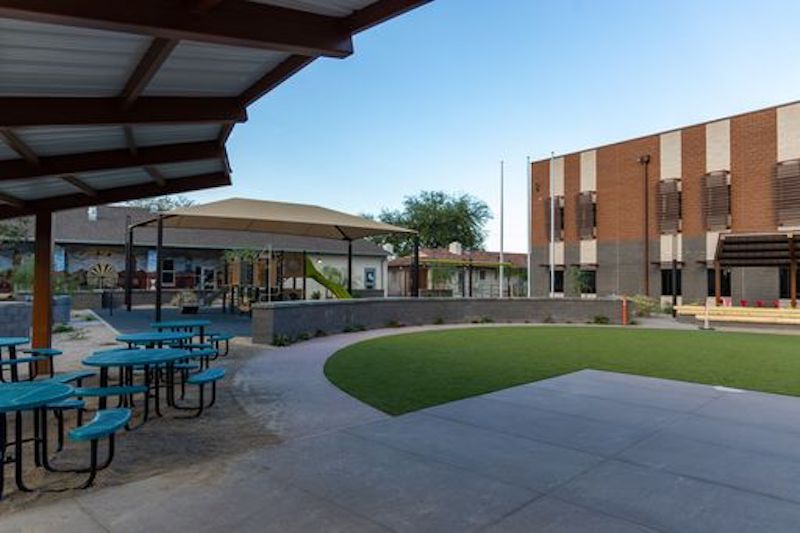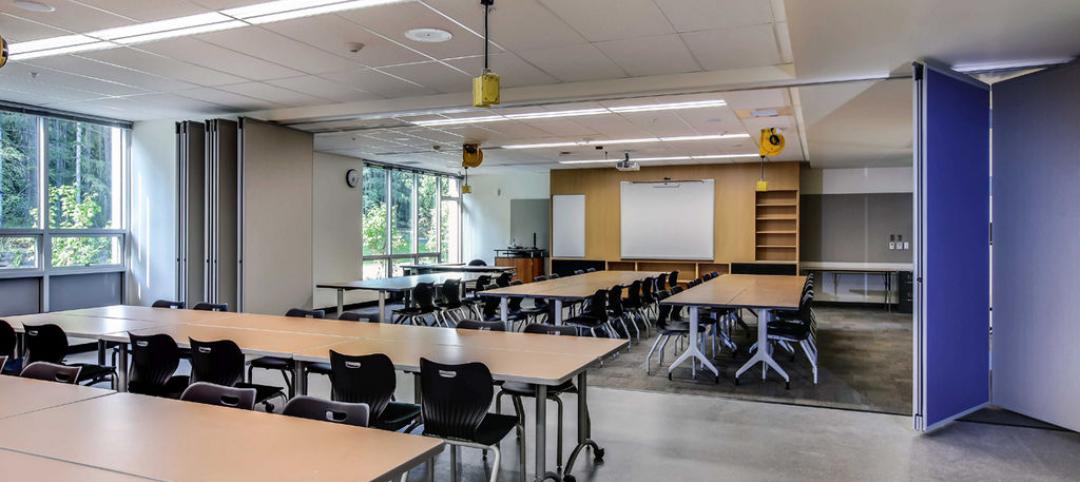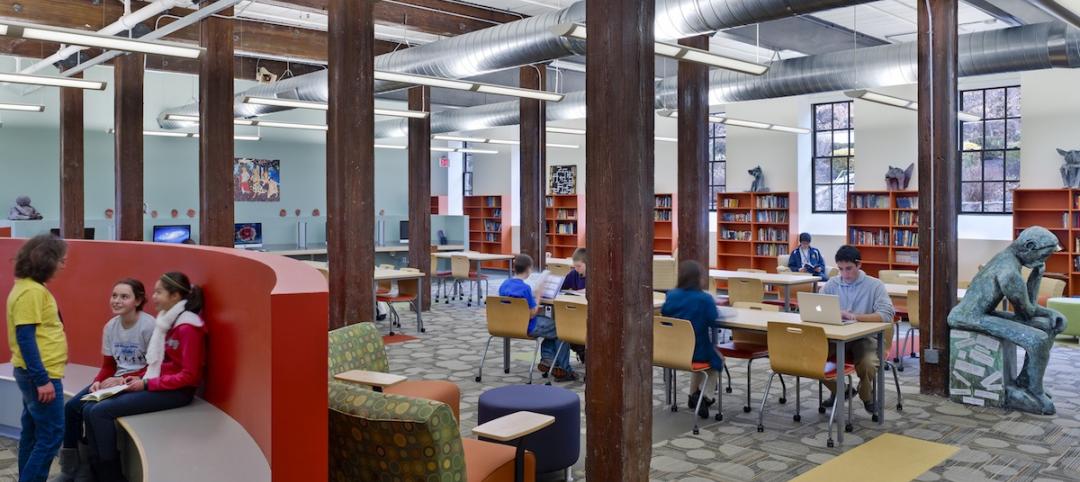Construction on the new Blackwater Community School, a two-story structure on the Gila River Indian Community, located southeast of Phoenix, Ariz., was completed on August 31. The school serves pre-school, the Family And Child Education Program (F.A.C.E.), and a K-5 grade school.
The two-year-long build on the 7.43-acre campus was in conjunction with Rosendin, the nation’s largest employee-owned electrical contracting company, along with Gilbane Building Company and design partner Breckenridge Group.
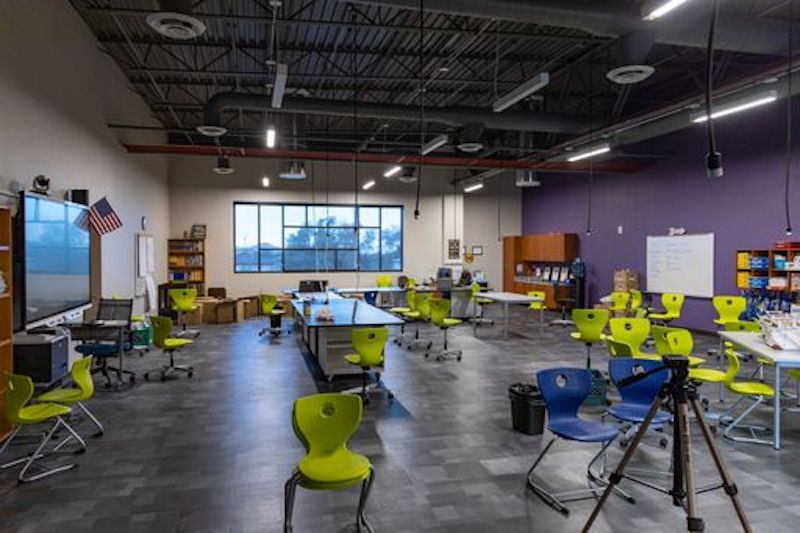
The $25 million replacement campus incorporates culturally significant artwork throughout the two-story classroom building, media center, multipurpose building, and cafeteria. The Blackwater Community School Culture Committee provided the insight for the cultural art in partnership and with the approval of the Blackwater Community School Board. Rosendin’s team worked on lighting, playground areas, basketball courts, sports fields, and reading patios.
The Blackwater Community School serves two distinct tribes: the Akimel O’Otham, who can trace their ancestry to the Hohokam; and the Pee Posh, who come from Yuma ancestry.
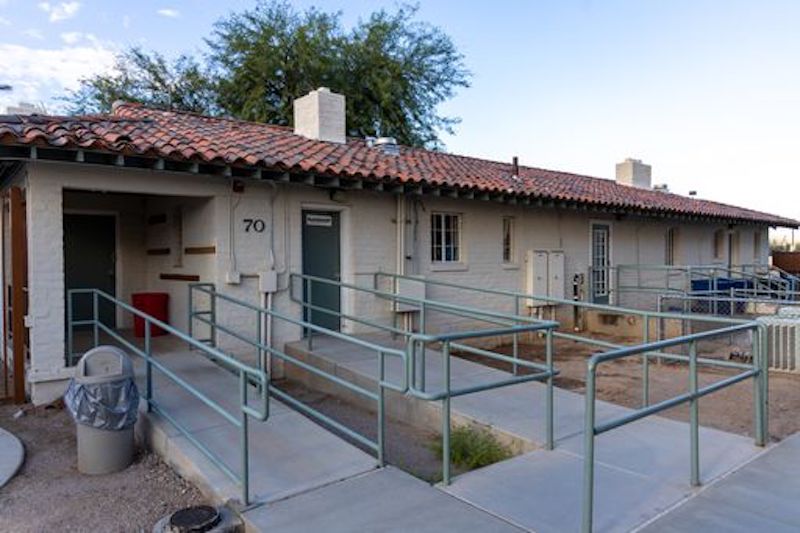
“The Blackwater Community School is the heart of the community and celebrates the Gila River Indian Community’s heritage throughout the year,” said Jagdish (Jack) Sharma, Principal of Blackwater Community School. “Agriculture is at the heart of the Akimel O’Otham culture. Our educators take pride in our quality educational practices and the presences of tradition’s. This is the reason why traditional symbols of the culture are placed throughout the new campus.”
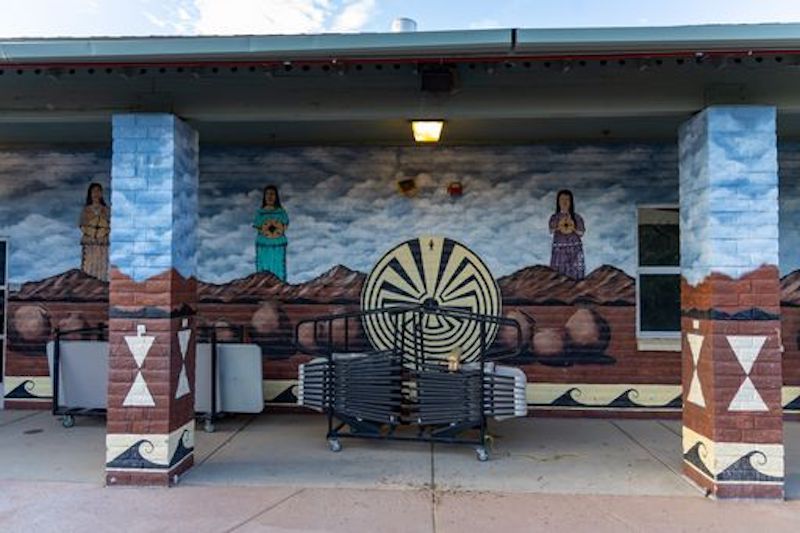
The Hohokam made contributions to the earliest forms of technology in the Southwest with the introduction of agriculture, irrigation canals, and extensive trade networks. Exterior and Internal murals throughout the campus depict those contributions with scenes of crop harvesting, desert landscapes, and petroglyphic symbols like the Man in the Maze, or Se:he. A shade structure has been built with metal shaped to look like cactus ribs, a material the Akimel O’Otham would use to build communal gathering space ramadas.
“There is a blue and pink mural in one of the hallways depicting the desert at night," said Sharma, speaking to the Blackwater Community School Culture Committee’s interpretation of the artwork. "Blackwater’s name comes from the standing water getting dark with night. In the glow of the moon, fish would appear. In the moon, there are two flute players, a reference to 'Man of the Maze.' There are murals like this all over campus that reflect our student’s culture enriching their overall learning experience,”
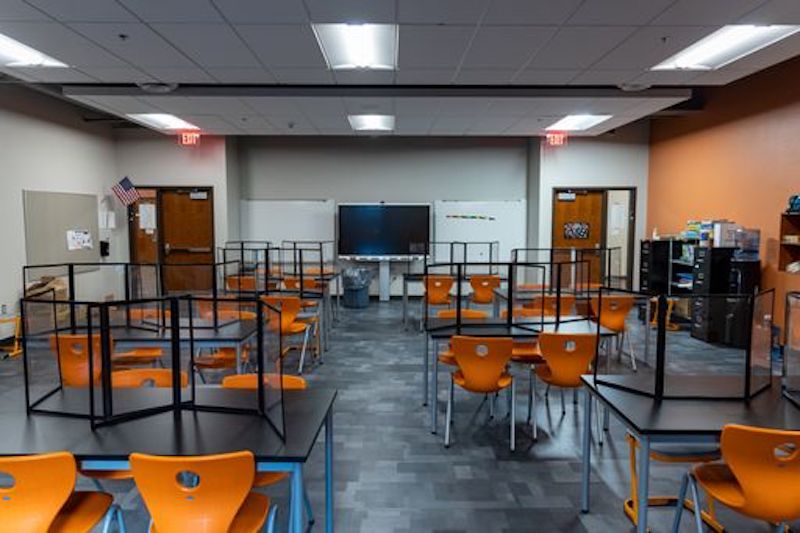
The school was originally built in 1939 and in 2018, received through other different funding sources, and Gila River Community Council, Bureau of Indian Affairs (BIA), monies for a replacement school.
“Rosendin is proud to have built the new elementary school in the Gila River Indian Community to give students the very best environment to learn and grow,” said Ben Miller, Rosendin Division Manager. “The school will serve as the hub of the larger community and support family education and culture in the local area."
The two-year campus build required an aggressive phasing schedule to implement construction while school was in session. Parts of the project were scheduled over winter and summer breaks to mitigate disruption to students.
“Blackwater Community School will serve as a pivotal gathering and educational spot for children and adults on the Gila River Indian Community," said Jeff Keck, Senior Project Executive, Gilbane Building Company. Gilbane is proud to work with Rosendin and other trade partners to have safely built a new campus to support this community’s families, cultures and traditions,”
ABOUT ROSENDIN
Rosendin, headquartered in San Jose, Calif., is the largest employee-owned electrical contractor in the United States, employing over 7,000, with revenues of $2 billion. Established in 1919, Rosendin remains has built quality electrical and communications installations for morethan a century. More information at: www.rosendin.com
ABOUT GILBANE BUILDING COMPANY
Gilbane provides a full slate of construction and facilities-related services – from pre-construction planning and integrated consulting capabilities to comprehensive construction management, general contracting, design-build, and facility management services. Founded in 1870 and still a privately held, family-owned company, Gilbane has more than 45 office locations worldwide. More information at: www.gilbaneco.com.
Related Stories
| Mar 4, 2014
If there’s no ‘STEM crisis,’ why build more STEM schools?
Before you get your shorts in a knot, I have nothing against science, technology, engineering, or even mathematics; to the contrary, I love all four “STEM” disciplines (I’m lying about the math). But I question whether we need to be building K-12 schools that overly emphasize or are totally devoted to STEM.
| Feb 26, 2014
Adaptive reuse project brings school into historic paper mill
The project features nontraditional classrooms for collaborative learning, an arts and music wing, and a technologically sophisticated global resource center.
| Feb 14, 2014
Crowdsourced Placemaking: How people will help shape architecture
The rise of mobile devices and social media, coupled with the use of advanced survey tools and interactive mapping apps, has created a powerful conduit through which Building Teams can capture real-time data on the public. For the first time, the masses can have a real say in how the built environment around them is formed—that is, if Building Teams are willing to listen.
| Feb 5, 2014
'School Security' PDF available to BD+C readers - CORRECTED
I've received several requests from BD+C readers who design and build K-12 schools about the 3-part series we ran in our January issue ("Can Design Prevent Another Sandy Hook?"). They wanted to send the issue to their school boards and other public officials with responsibility for school safety. In light of the importance of this topic, as a special service to our readers we're making the series available in PDF form.
| Feb 5, 2014
Extreme conversion: Atlanta turns high-rise office building into high school
Formerly occupied by IBM, the 11-story Lakeside building is the new home for North Atlanta High School.
| Jan 30, 2014
What to expect in the metal building industry in 2014
Every year brings changes. This one won’t be any different. We’ll see growth in some areas, declines in others. Here’s a little preview of what we’ll be writing about 2014 when 2015 comes rolling in.
| Jan 28, 2014
White Paper: How metal buildings deliver long-term value to schools
A new white paper from Star Building Systems outlines the benefits of metal buildings for public and private school building projects.
| Jan 28, 2014
16 awe-inspiring interior designs from around the world [slideshow]
The International Interior Design Association released the winners of its 4th Annual Global Excellence Awards. Here's a recap of the winning projects.
| Jan 15, 2014
Report: 32 U.S. buildings have been verified as net-zero energy performers
The New Buildings Institute's 2014 Getting to Zero Status report includes an interactive map detailing the net-zero energy buildings that have been verified by NBI.
| Jan 13, 2014
Custom exterior fabricator A. Zahner unveils free façade design software for architects
The web-based tool uses the company's factory floor like "a massive rapid prototype machine,” allowing designers to manipulate designs on the fly based on cost and other factors, according to CEO/President Bill Zahner.


